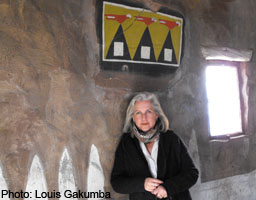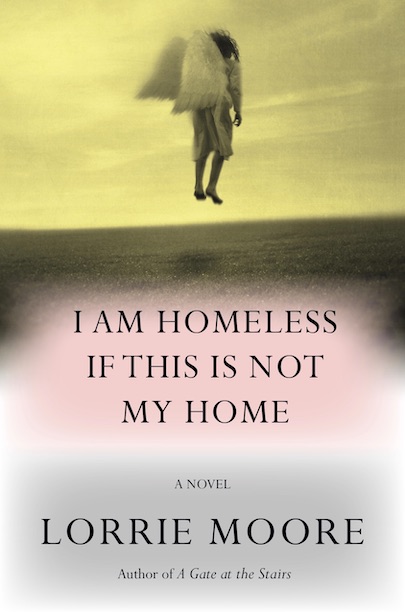Responding to the Beauty of a Broken World
Terry Tempest Williams talks with Chapter 16 about her newest memoir
The author of fourteen books, Terry Tempest Williams has spent her life listening carefully to the sounds that surround her. Williams was fifty-four years old when she began writing When Women Were Birds: Fifty-Four Variations on Voice, a memoir in which she responds to her own mother’s death at age fifty-four. Telling the story of finding her mother’s journals, which contained nothing but blank pages, she contemplates the place of silence in a writer’s life.
Her mother’s journals bewildered Williams. “Mormon women are expected to do two things,” she writes: “keep a journal and bear children.” What could her mother have meant by saving three shelves of beautifully bound volumes that contained no words? Over time, however, Williams finds that her mother’s silence blooms into a presence that is unexpected and inspirational.
 As she made clear in her memoir Refuge, which has become a classic work of environmental literature, Williams is unafraid of confronting her own vulnerability, and she demonstrates a similar fearlessness when contemplating the human place within nature. This curiosity is inspired by the sublime landscape of the American west—the land of her Utah childhood and current home. In an attempt to navigate the complex relationship between humanity and nature, Williams’s work considers what happens when human voices converge with natural space. Prior to her appearance on March 6 at Parnassus Books in Nashville, she recently answered questions from Chapter 16 via email:
As she made clear in her memoir Refuge, which has become a classic work of environmental literature, Williams is unafraid of confronting her own vulnerability, and she demonstrates a similar fearlessness when contemplating the human place within nature. This curiosity is inspired by the sublime landscape of the American west—the land of her Utah childhood and current home. In an attempt to navigate the complex relationship between humanity and nature, Williams’s work considers what happens when human voices converge with natural space. Prior to her appearance on March 6 at Parnassus Books in Nashville, she recently answered questions from Chapter 16 via email:
Chapter 16: How has the discovery of your mother’s blank journals—and the unavoidable presence of silence within them—affected your own writing?
Terry Tempest Williams: What an insightful question. I do keep a daily journal. My mother’s journals are always with me each time I face the empty white page. I am more mindful of writing about how I am feeling about the day rather than simply what I am doing. For me, the silence inherent in my mother’s journals translates to a challenge: write what scares you. Write to your depth. Make it beautiful in the midst of the mundane. And after reading Mavis Gallant’s journals, I am inspired to write more descriptively, paying attention to details.
Chapter 16: In When Women Were Birds you write about how important fairy tales were to you as a child, and the memoir itself sometimes reads like a myth. Did specific myths or fairy tales influence the book?
Terry Tempest Williams: My grandmother Mimi raised us on myths and fairytales, not as simply “make-believe” stories, but stories that serve as a mirror to our inner lives, with deep psychological resonance. She was a Jungian scholar, so dreams fell into the same category. My grandmother approached our dreams as personal myths. The “collective unconscious” was a term familiar to us at an early age. We recognized symbols as holding archetypal truths. And when I worked on the Navajo Reservation and listened to the Elders telling Creation Stories, they held the same weight for me as the story in Genesis in the Bible. Both stories illuminate what it means to be human.
This view of storytelling infiltrates my writing. Storytelling is the umbilical cord between the past, present, and future. Whether it is the story of my mother’s empty journals or the story
behind Richard Strauss’s opera, “Die Frau Ohne Schatten,” each page is grounded in narrative.
Elements of repetition and attention to lyrical language may add to this mythical sensibility
of uncovering, discovering, the power of voice.
Chapter 16: A Boston Globe review of When Women Were Birds describes your mother’s decision to leave her journals blank as “subversive,” signaling an act of defiance against her Mormon upbringing. Do you agree with this reading?
 Terry Tempest Williams: Mormon women are expected to do two things: keep a journal and bear children. My mother did both. She did keep a journal; she just didn’t write in them. I don’t think there is just one reason for her empty journals. My mother was too complex for that. I think there are many reasons, but one of the most compelling for me as her daughter is this idea of defiance. She valued her privacy. She didn’t want to hurt anyone, and if she told the truth, she might have.
Terry Tempest Williams: Mormon women are expected to do two things: keep a journal and bear children. My mother did both. She did keep a journal; she just didn’t write in them. I don’t think there is just one reason for her empty journals. My mother was too complex for that. I think there are many reasons, but one of the most compelling for me as her daughter is this idea of defiance. She valued her privacy. She didn’t want to hurt anyone, and if she told the truth, she might have.
She protected herself and her family. But not writing in her journals as an act of defiance is so delicious. I see my mother as Trickster. This only adds to her provocation and mystery. My mother knew that the journals she bequeathed to me would drive me mad, and they have done exactly that for twenty-five years, at times painfully so. At other times, they remain a great gift. I see my mother’s empty journals as a Buddhist koan, one I keep pondering.
Chapter 16: From Prokofiev’s instrumental storytelling in Peter and the Wolf to John Cage’s silent 4’ 33,” music seems to have strong presence in your writing.
Terry Tempest Williams: I listen to music as I write. This may seem odd, perhaps even disrespectful to the particular piece of music that I am listening to, but I don’t see it that way. Music sets a tone, an emotional landscape from which I write. Music drops my concentration to a deeper level of attention, so the words I write also inhabit a deeper attention. My imagination is more fully focused and engaged. Whether it is Bach’s “Double Concerto for Two Violins in D minor” or the music of Monteverdi sung by Philippe Jaroussky or David Darling’s cello suites, music does inform my writing.
Chapter 16: In Refuge you explore the significance of place, and in When Women Were Birds you focus on voice. Do you have any projects in mind that will explore other fundamental elements of narrative?
Terry Tempest Williams: Vision. This is what I am thinking about today. How we see the world. Individual perceptions: biological, emotional, and spiritual.
Chapter 16: You suggest that the voices in nature are made up of music and silence but not necessarily human words. Do you believe that there is a distinction between human voice and the voice of nature?
Terry Tempest Williams: When I think about voices in nature—rain, wind, thunder—these are voices without language. But if I think about various languages within the natural world, dolphins and prairie dogs come first and foremost to mind; each has its own vocabulary and grammatical structure. We are just beginning to understand and decipher not only how they communicate but the sophistication of what they communicate. Add whales, wolves, coyotes, all manner of birds, and insects. We are not the only species on Earth to articulate what we see, feel, and think, or how we respond to one another out of fear or mutual attraction. And within the human family, languages are as diverse as the cultures who speak them. As Aldo Leopold writes in his essay, “The Land Ethic,” “The rich diversity of the world’s cultures reflects a corresponding diversity in the wilds that gave them birth.” The question for me becomes how do we truly learn how to listen?
Chapter 16: You’ve written several ecology books for children that bring nature to life. Have you found storytelling to be useful in science education?
Terry Tempest Williams: We learn most powerfully through emotional connections, not just intellectual ones. Science education is learning how the world works and to revel in the wonder of it all. Ecology is the study of home, and it is all about storytelling, who lives where and how and with whom. The remarkable natural histories of individual plant and animal species are one story after another of adaptation, accommodation, and evolutionary brilliance.
Storytelling bypasses rhetoric and pierces the heart. We not only come to understand a scientific situation or delve into an ecological problem or principle, but by telling a story instead of just laying out the facts, we feel the subject at hand much more powerfully through the interconnectedness of all things. When we tell a story, a community of listeners and readers is created through a shared imagination. Shared imaginations remind us not only what is possible, but necessary—the ecological and moral imperative to embrace and act from a deep reverence for life. To tell a story on the page or in the world is to create a sense of engagement. Emily Dickinson once wrote a letter to her friend saying, “Life is a spell so exquisite, everything conspires to break it.”
How can we not respond? I respond to the beauty of our broken world by engaging stories. Before there was the discipline of science there was wonder. Wonder precedes knowledge. When we tell a story, we locate knowledge in the service of wonder. My dream is to one day have the sciences and the humanities so fully integrated through courageous storytelling that we see the world whole—even holy.
Terry Tempest Williams will discuss When Women Were Birds at Parnassus Booksellers in Nashville on March 6 at 6:30 p.m.





